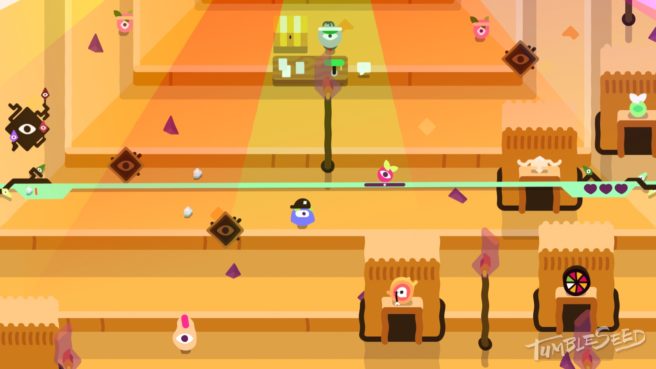TumbleSeed devs on what separates HD Rumble from regular rumble, how it’s used in the game
Posted on May 1, 2017 by Brian(@NE_Brian) in News, Switch eShop
One of the standout features of Switch is HD Rumble. When developers use the functionality, the vibration feedback can feel more realistic.
HD Rumble has been used in several Switch titles thus far, and it’ll also be included in tomorrow’s new eShop game TumbleSeed. Polygon caught up with programmer David Laskey and composer / sound designer Joel Corelitz
To begin, the two discussed how HD Rumble separates itself from regular rumble:
“The biggest difference between HD rumble and what we’re all used to from previous controllers is precision and responsiveness. With old rumble motors, when the developer wants the haptic feedback to kick in. the motor takes a small but measurable amount of time to get to the desired intensity. We’re able to immediately jump to the feedback we want with HD rumble. That alone makes it a more one-to-one experience regarding what you’re seeing, hearing and feeling.” – Laskey
“With traditional rumble, frequency and intensity are linked. said. So, in other words, to make the rumble effect more pronounced, the motor has to spin faster. HD rumble on the Switch is much more detailed — sort of like a sound you can feel. We were able to use it to create a recognizable feeling for the game’s core mechanics, and being able scale the intensity of those sensations without sacrificing their identity really helps them feel real.” – Corelitz
“When designing the rumble effects, rather than say ‘I want the player’s hand to shake when they feel an earthquake and I want the player’s hands to shake when they’re rolling really fast,’ HD rumble allowed us to say ‘I want the player to feel the ground crumbling beneath them; I want them to feel a pointed crystalline rock tumbling across a vine.'” – Laskey
As for how TumbleSeed uses HD Rumble, Corelitz and Laskey said:
“We took special care to make sure that HD rumble always parallels what the sound is doing. When the seed stops, the sound then abruptly fades to nothing, accompanied with a slight bump or hit. I know from doing a lot of synthesis work that sounds that increase in volume logarithmically are more ‘real’ sounding than things that increase linearly. David and I worked out an intensity curve that fades the rumble in logarithmically too. It’s those kinds of dynamics and the blend of engaging two senses: hearing and touch, that give TumbleSeed’s rumble its unique physicality.” – Corelitz
“I absolutely think it was worth it. I was pleasantly surprised at how simple Nintendo made it to get HD rumble working. With the tools being as good as they are and the fact that we were already looking to provide rumble feedback with the PS4, it only made sense to dive deeper with the potential of HD rumble. It can really bring certain moments and mechanics to another level, giving developers a whole new axis of communication with the player.” – Laskey
